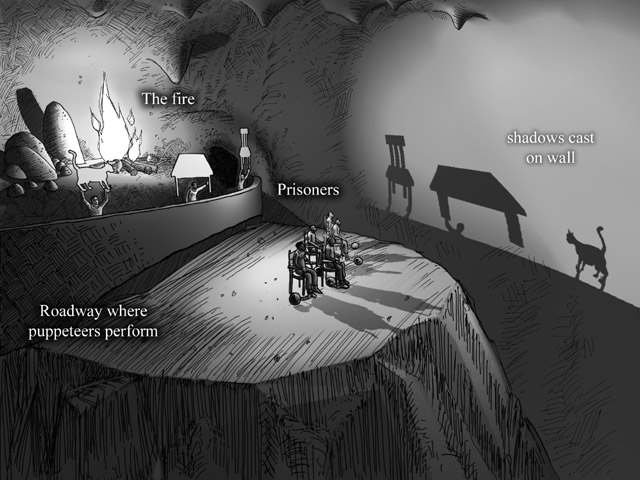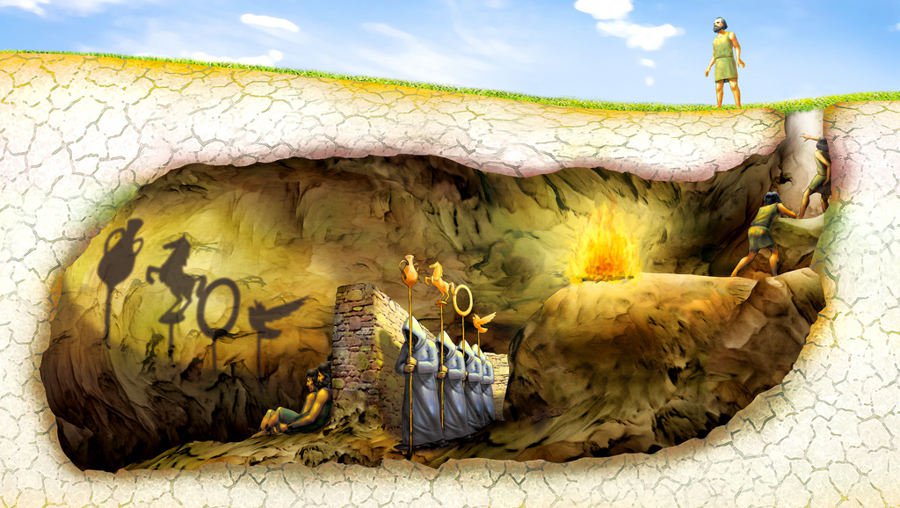
… that the Hollywood hit, “The Matrix” mirrors Plato’s Allegory of the Cave in a number of ways. Plato’s allegory is a depiction of the truth, and he wants us to be open-minded about change, and seek the power of possibility and truth. But there is a hope with Plato’s allegory, the hope of ascending to truth and values, even though we might be shunned, we have a grasp of the light.Plato, in his classic book The Republic, from which the Allegory of the Cave is extracted, says the most important and difficult concepts to prove, are the matters we cannot see, but just feel and perceive. We live in a time of loss of meaning, of crumbling values of truth and morality, of corruption in political life and decline in personal integrity. They are chained in slavery to ignorance and passions, to mob hysteria for or against fleeting issues, believing in the illusions, the shadows. Plato’s allegory revolves around truth and the reflection of truth, as devastating criticism of our everyday lives as being in bondage to superficialities, to shadows rather than to substance.īoth the leaders and the public are ignorant and corrupt, without true knowledge of themselves or the world, motivated by self-gratification. In ‘the allegory of the Cave’, Plato distinguishes between people who mistake sensory knowledge for the truth and compare them to people who actually see. Plato claimed that knowledge gained through the senses is no more than opinion and in order to have real knowledge, we must gain it through philosophical reasoning. ‘The allegory of the Cave’ is a theory, concerning human perception that can be altered by what is seen and hidden. This is because the philosopher is knowledgeable about the forms of the virtues and the good and is more likely to apply them to society. Philosophers should be the ones to lead rather than those who simply have the ability to manipulate the masses. They are both aware of a slightly higher level of truth and capable of manipulation of average people’s perception but still unaware of the nature of the forms and of the form of the good. Another example is that in his allegory there are malicious individuals who stand in front of a fire as to be able to create shadows which the prisoners perceive as incorrectly reality.

He argues that the philosophers, or individuals who have acquired knowledge of virtue and truth, should lead society. Plato’s ideal society contains the correct functions of politics and motive. More emphatically, nonetheless Plato finds that because of their enlightened minds, the philosopher-king has a duty to rule that transcends their personal preference for anonymity. Plato remains convinced that the best rulers, the philosopher-kings, are suited not only because of their education, experience, and wisdom, but also because they would prefer not to rule. A person who has gained such insight, according to Plato is best equipped to govern in society, having knowledge what is ultimately good, however, will frequently be misunderstood by ‘the other prisoners’ who haven’t obtained intellectual insights. However when one is exposed to the ‘dazzling light’ they begin to see truth through a long, tortuous intellectual journey, discovering a higher realm, true reality and having awareness of goodness. Though they might be bounded in one position, they accept that it is their natural ‘place in society’. Plato’s allegory of the cave shows that society is in a state of ignorance. The importance of the allegory lies in the belief that there are invisible truths lying under the apparent surface, which can only be obtained through being enlightened, being “dragged” out of the darkness and seeing the light. This is an important development to the story because it shows us that what we perceive as real from birth is completely false based on our imperfect interpretations of reality and goodness.


The thesis behind is the basic tenets that all we perceive are imperfect “reflections, which subsequently represent truth and reality.


 0 kommentar(er)
0 kommentar(er)
